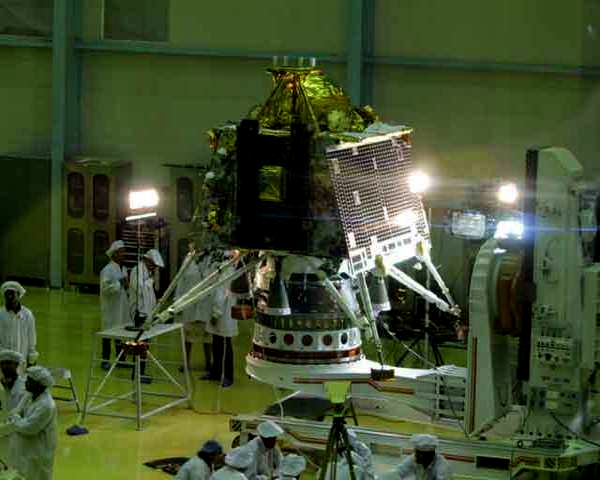Chennai-India’s spacecraft to the moon Chandrayaan-2 on Wednesday successfully entered the Lunar Transfer Trajectory (LTT) after its orbit was raised further, said Indian space agency.
According to Indian Space Research Organisation (ISRO), the final orbit raising manoeuvre of Chandrayaan-2 was successfully carried out at 2.21 a.m. by firing the spacecraft’s motors for 1,203 seconds.
“With this, Chandrayaan-2 entered the Lunar Transfer Trajectory. Earlier, the spacecraft’s orbit was progressively increased five times during July 23 to August 06, 2019,” ISRO said.
The health of the spacecraft is being continuously monitored from the Mission Operations Complex (MOX) at ISRO Telemetry, Tracking and Command Network (ISTRAC) in Bengaluru with support from Indian Deep Space Network (IDSN) antennas at Byalalu, near Bengaluru.
Since its launch on July 22, 2019 by GSLV MkIII-M1 vehicle, all systems onboard Chandrayaan-2 spacecraft are performing normal.
According to ISRO, Chandrayaan-2 will approach Moon on August 20, 2019 and the spacecraft’s liquid engine will be fired again to insert the spacecraft into a lunar orbit.
“Following this, there will be further four orbit maneuvers (Aug 21, 28, 30 and Sept 1) to make the spacecraft enter into its final orbit passing over the lunar poles at a distance of about 100 km from the Moon’s surface,” ISRO said.
Subsequently, Vikram lander will separate from the orbiter on September 02, 2019.
“Two orbit manoeuvers will be performed on the lander before the initiation of powered descent to make a soft landing on the lunar surface on September 07, 2019,” ISRO said.
On July 22, the Chandrayaan-2 was injected into an elliptical orbit of 170×45,475 km by India’s heavy lift rocket Geosynchronous Satellite Launch Vehicle-Mark III (GSLV Mk III) in a text book style.
The spacecraft comprises three segments – the Orbiter (weighing 2,379 kg, eight payloads), the lander ‘Vikram’ (1,471 kg, four payloads) and rover ‘Pragyan’ (27 kg, two payloads).
The Indian space agency said the major activities include Earth-bound manoeuvres, the trans-lunar insertion, lunar-bound manoeuvres, Vikram’s separation from Chandrayaan-2 and touch down on the Moon’s South Pole.
Source: ET
Image Courtesy: ISRO
You may also like
-
New Heat-Based Approach To Cancer Treatment Can Reduce Chemotherapy Doses
-
Scientists Take A Major Step Towards Unification Of Classical & Quantum Gravity
-
India Graphene Engineering and Innovation Centre (IGEIC) Under the Vision of Viksit Bharat@2047 Launched
-
New High-Performance Gas Sensor can Monitor Low Level Nitrogen Oxides Pollution
-
Antidepressant Drug can be Repurposed for Treating Breast Cancer
